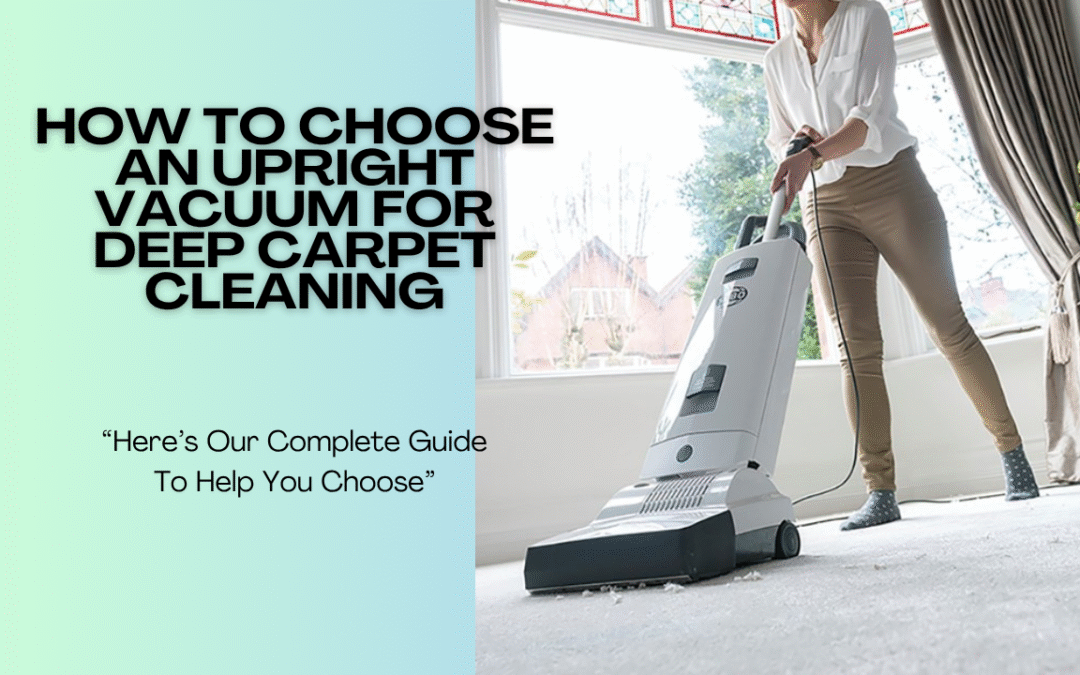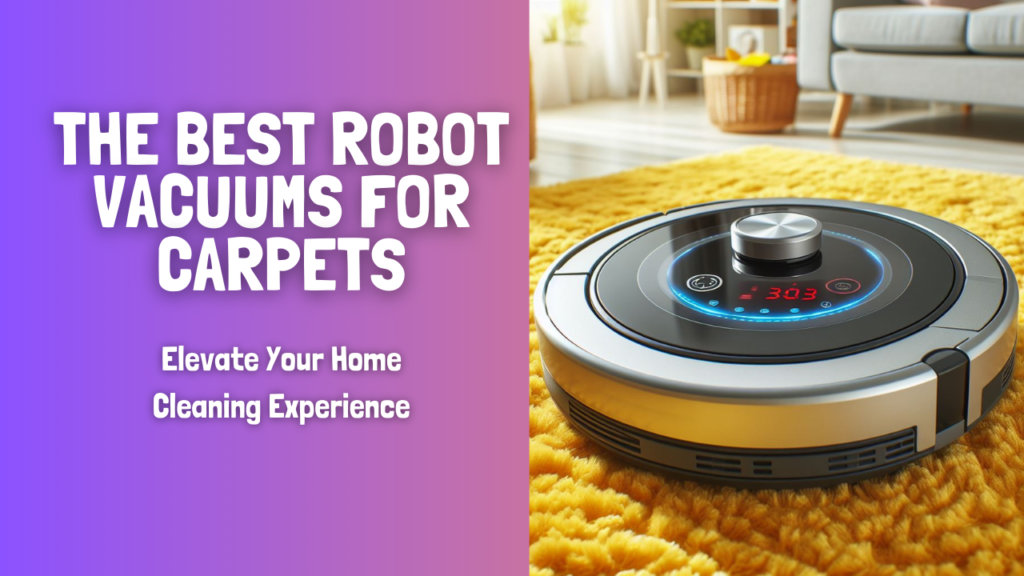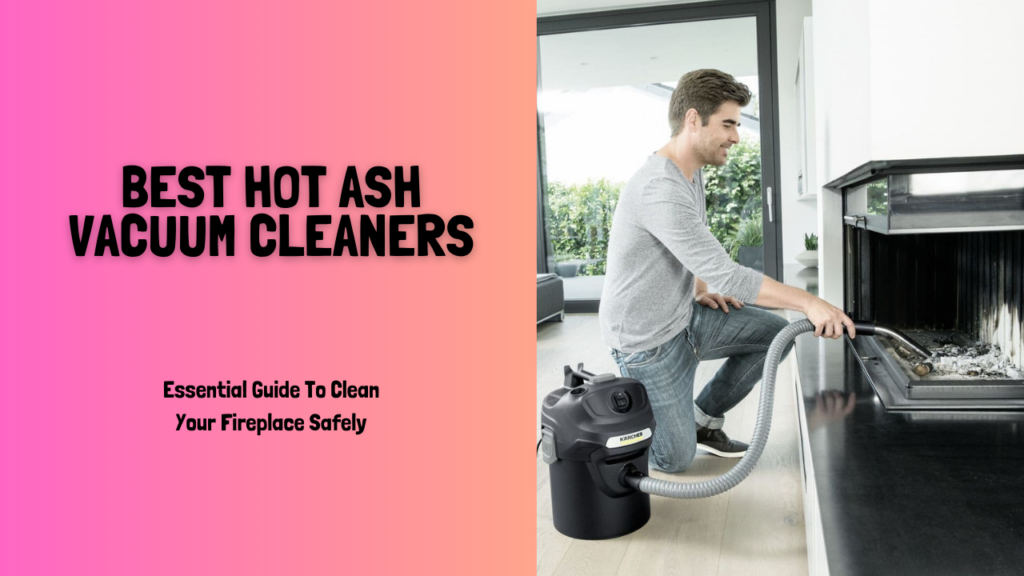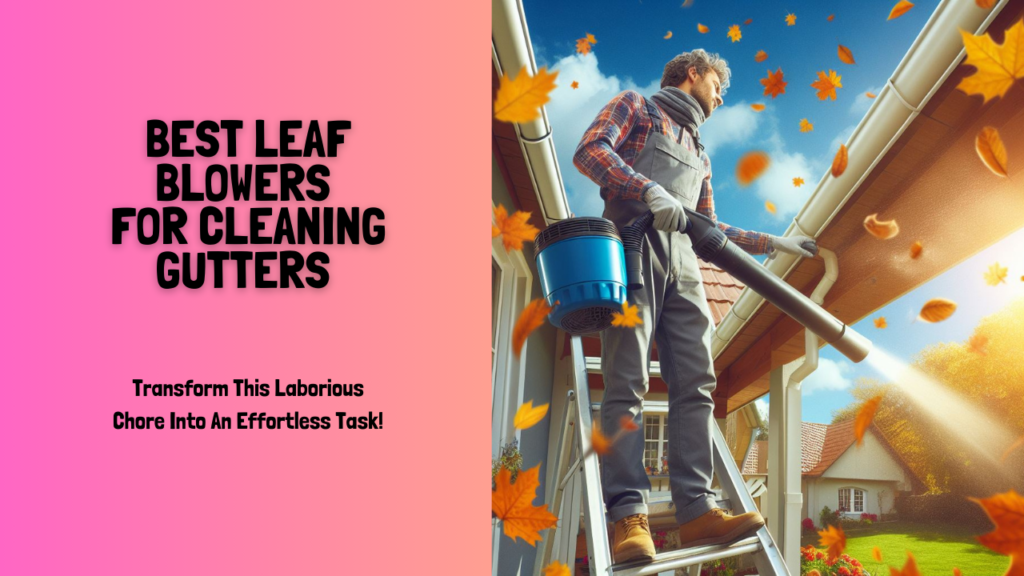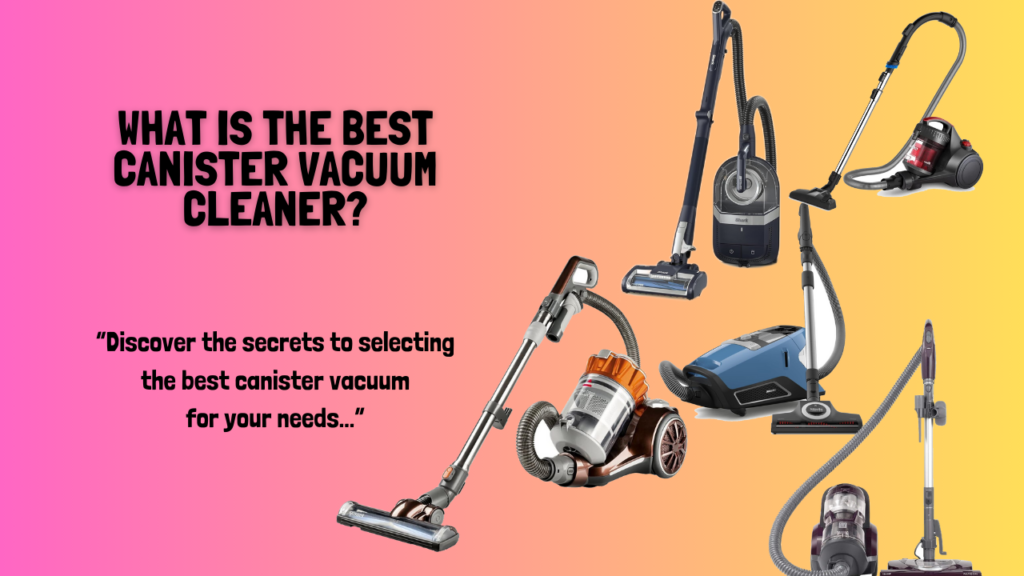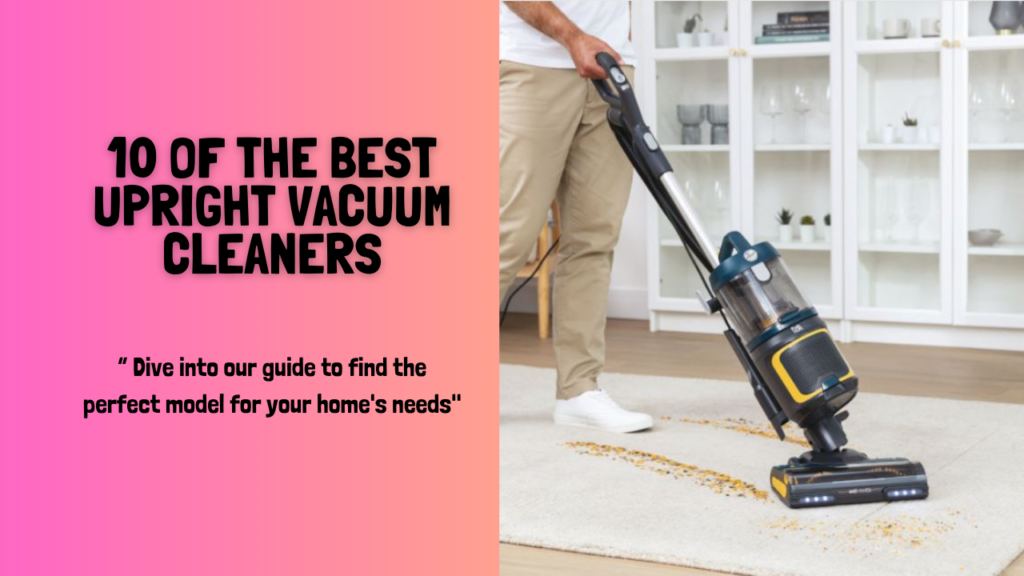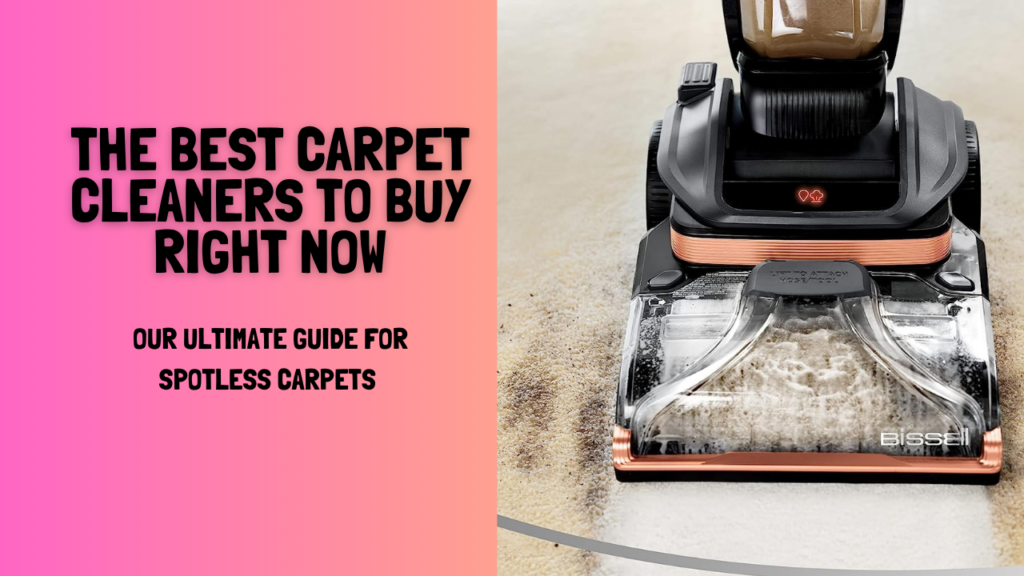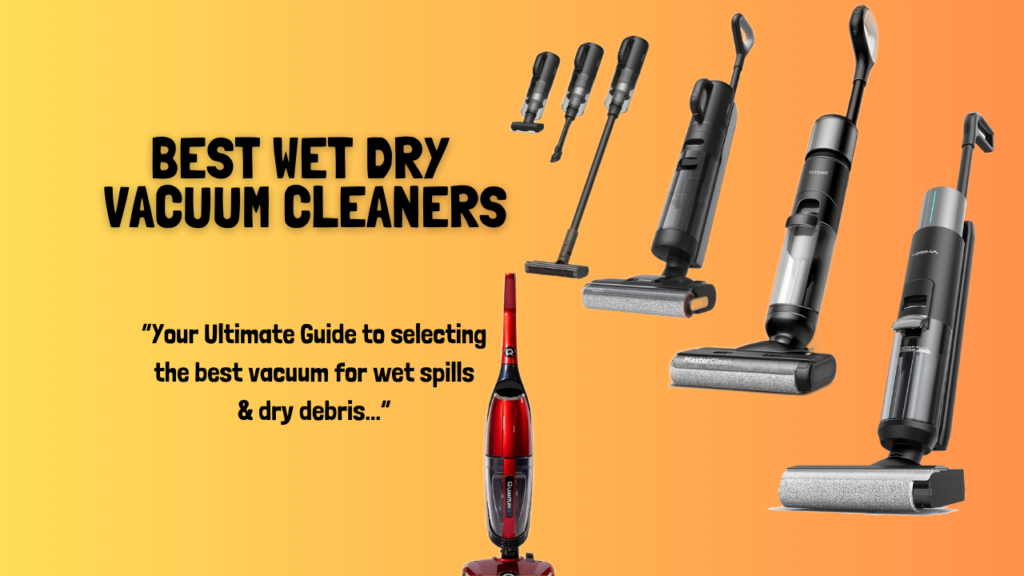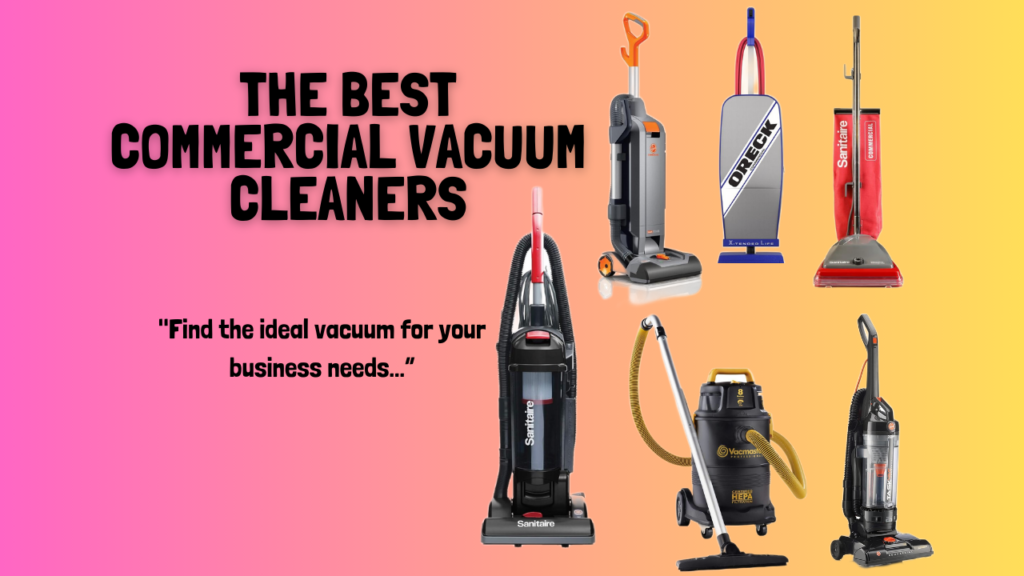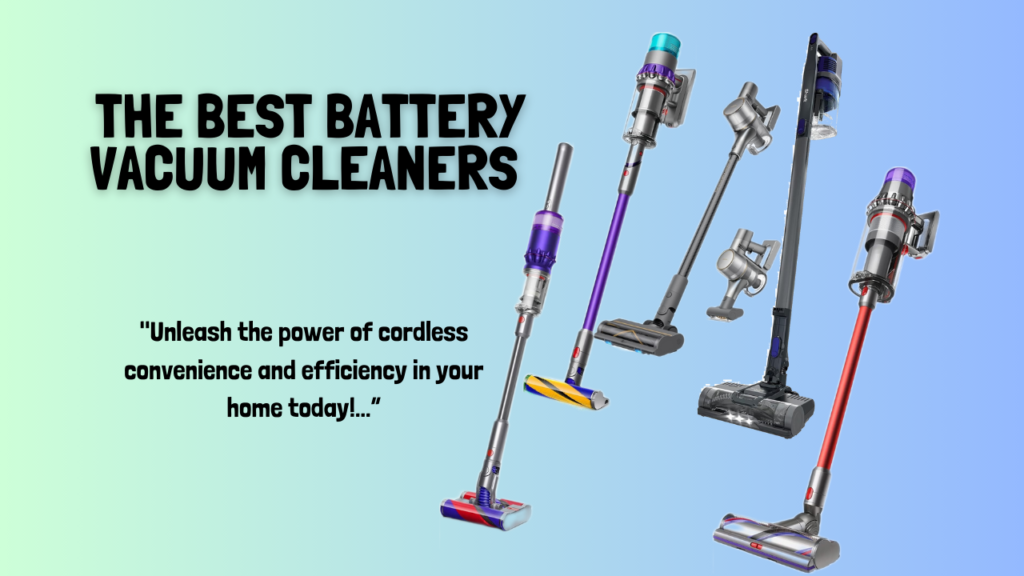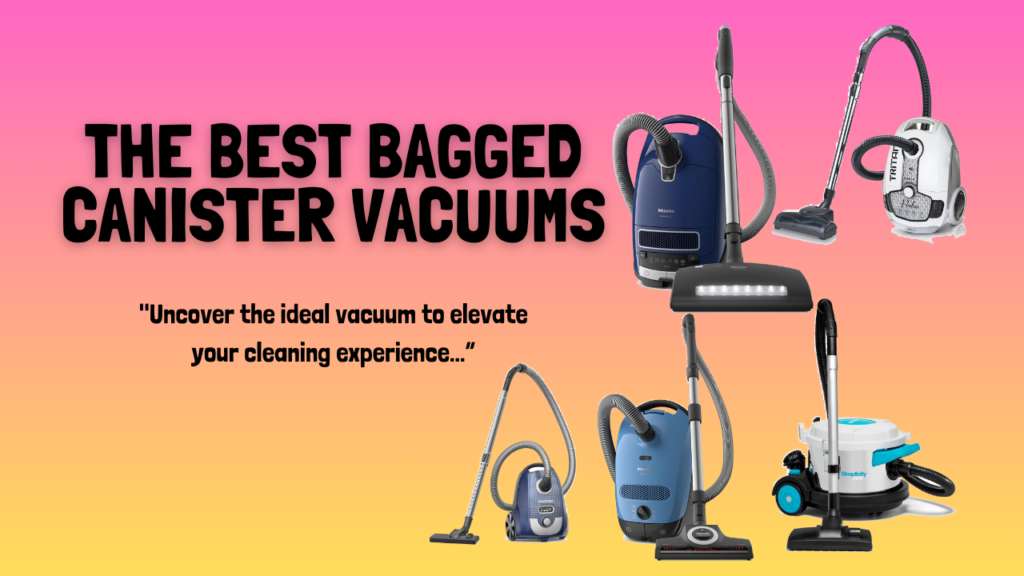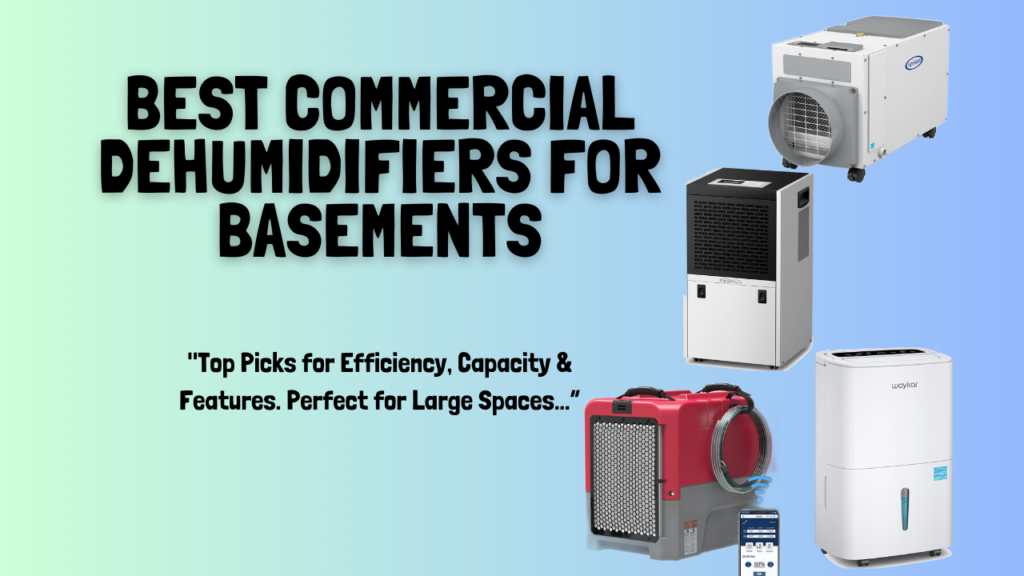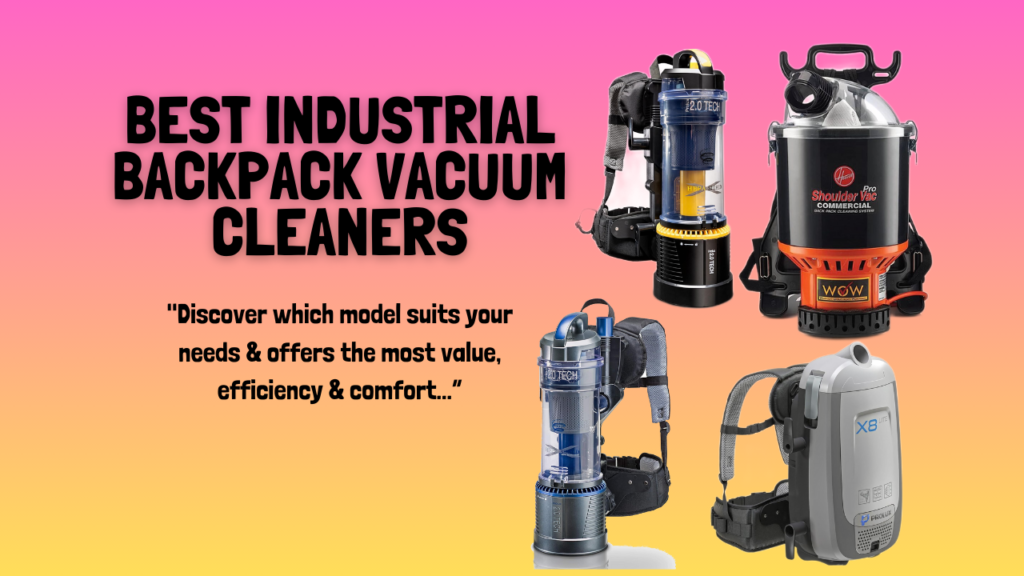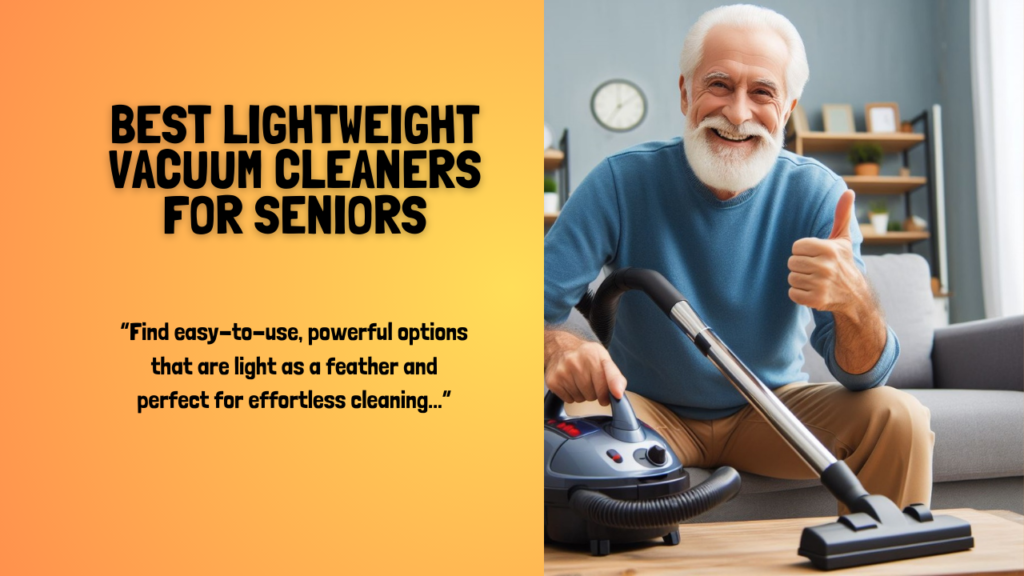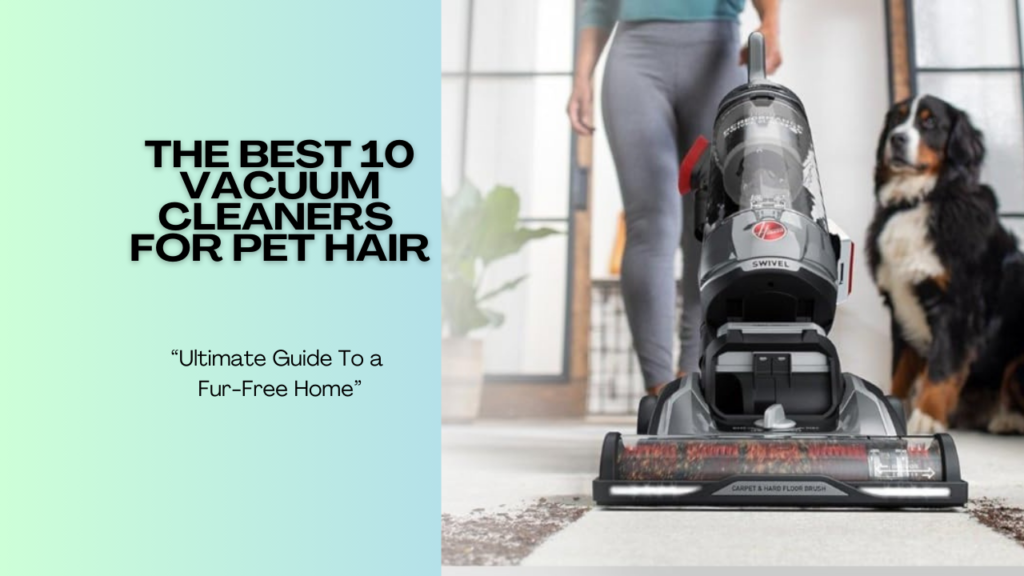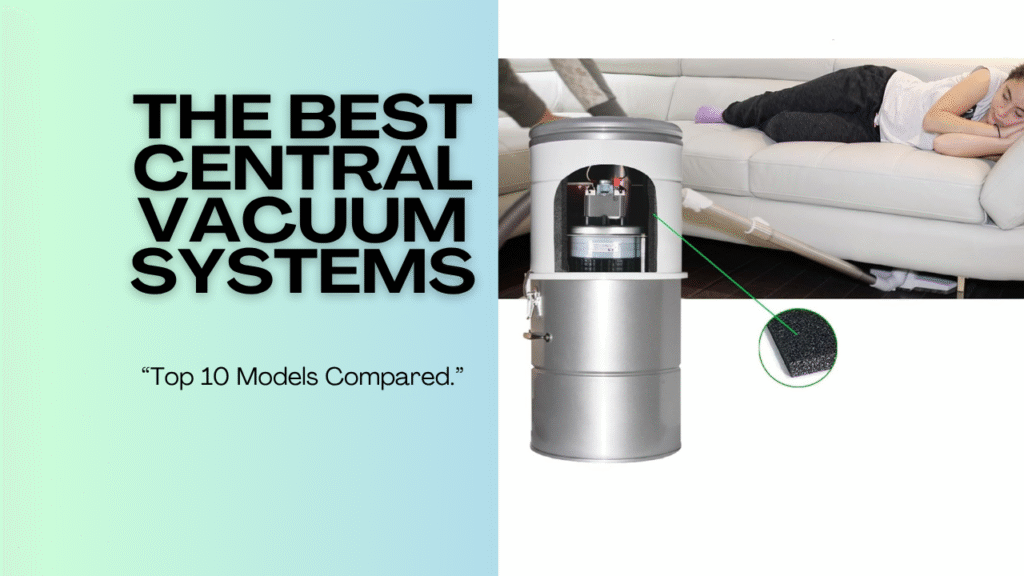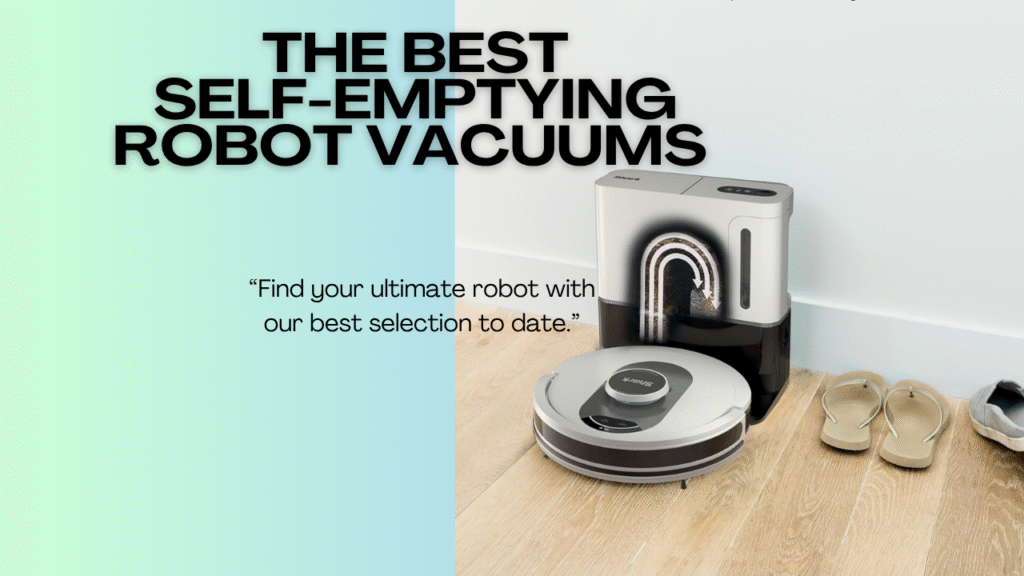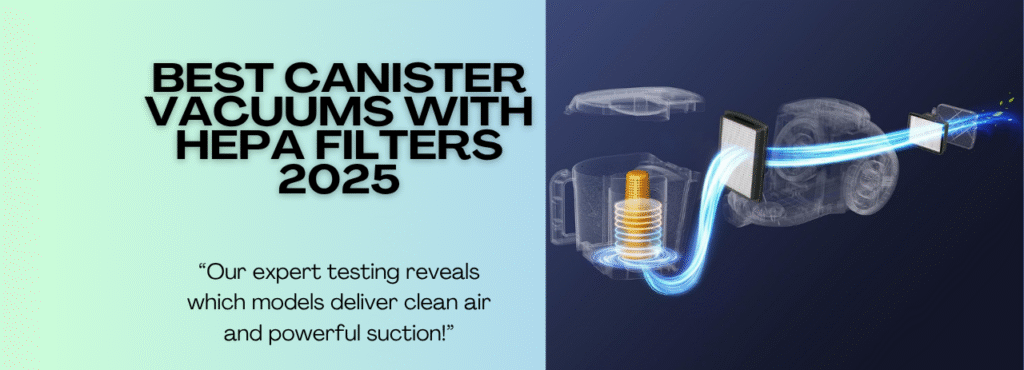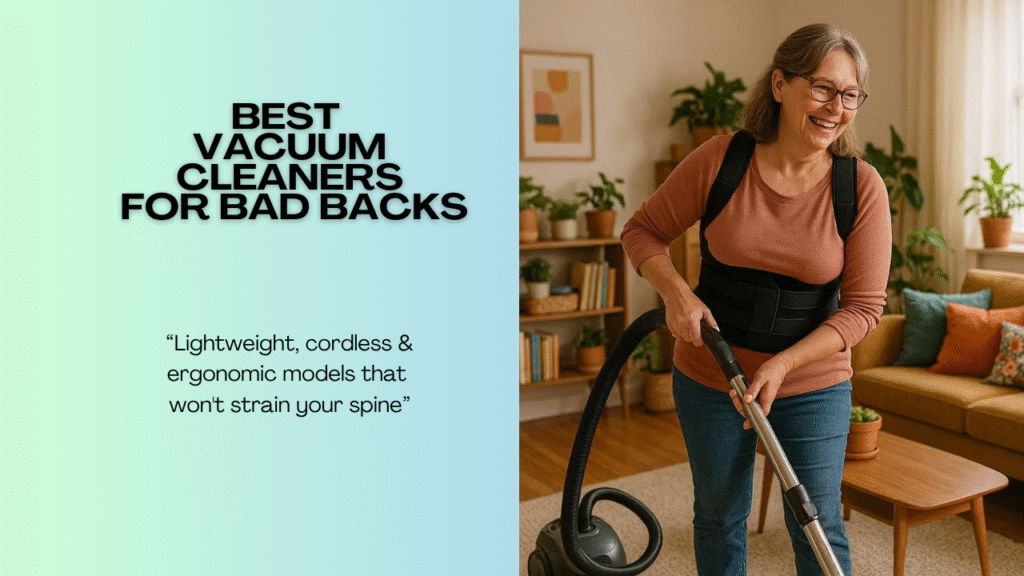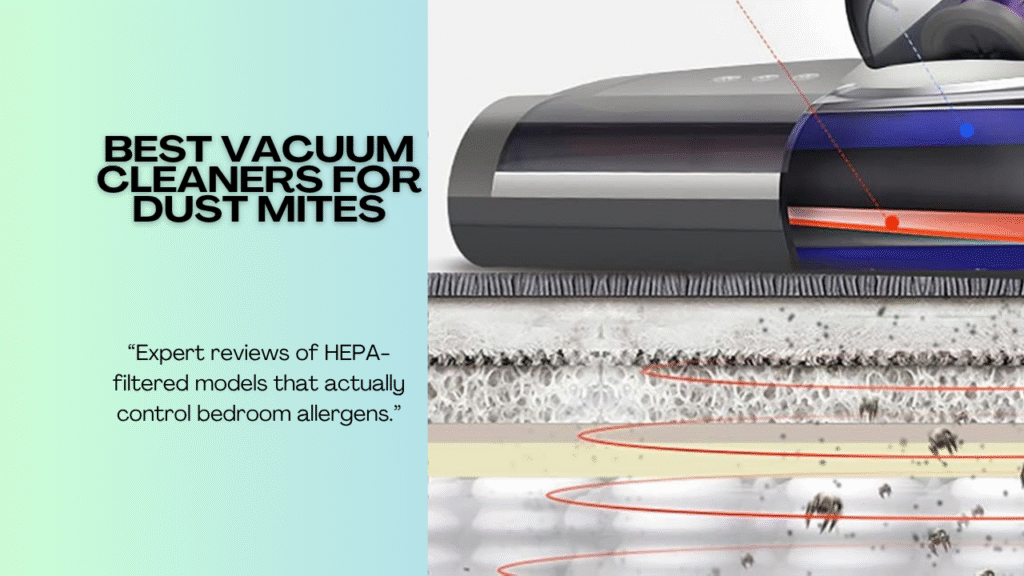Table of Contents
I still remember the first time I rented a professional carpet cleaner for my living room. Watching dark, dirty water pour out from carpets I’d been vacuuming weekly for years was equal parts disgusting and enlightening. My vacuum wasn’t actually cleaning, it was just surface-skimming. That experience showed that I needed to learn how to choose an upright vacuum for deep carpet cleaning more effectively.
Not all vacuums penetrate carpet fibres effectively. Most just rearrange surface dirt while leaving embedded grime untouched. Deep carpet cleaning requires specific vacuum capabilities that many models lack. Powerful suction alone isn’t enough. You need aggressive brush roll action, proper height adjustment, and an airflow design that actually pulls debris from deep within the carpet pile.
Why Upright Vacuums Excel on Carpet
Upright vacuums dominate carpet cleaning for good reasons. Their design positions motors and brush rolls optimally for carpet agitation. Weight pressing down on carpets enhances brush roll penetration.
Canister vacuums can clean carpets adequately with the right powerhead. However, uprights deliver superior results with less effort. The integrated design creates better airflow pathways and more aggressive cleaning action.
Stick vacuums and robot vacuums simply can’t match upright performance on thick carpets. They lack the weight, power, and brush roll aggression necessary for deep cleaning.
The Deep Cleaning Difference
Surface cleaning removes visible debris from carpet tops. Deep cleaning extracts dirt, dust, and allergens embedded within carpet fibers. This distinction matters enormously for carpet longevity and indoor air quality.
Carpets trap particles that settle into lower pile levels. Regular foot traffic pushes debris deeper. Without proper deep cleaning, carpets become dirt repositories that degrade air quality.
According to the EPA’s Indoor Air Quality guidelines, carpets can harbour significant allergens and pollutants without regular deep cleaning.
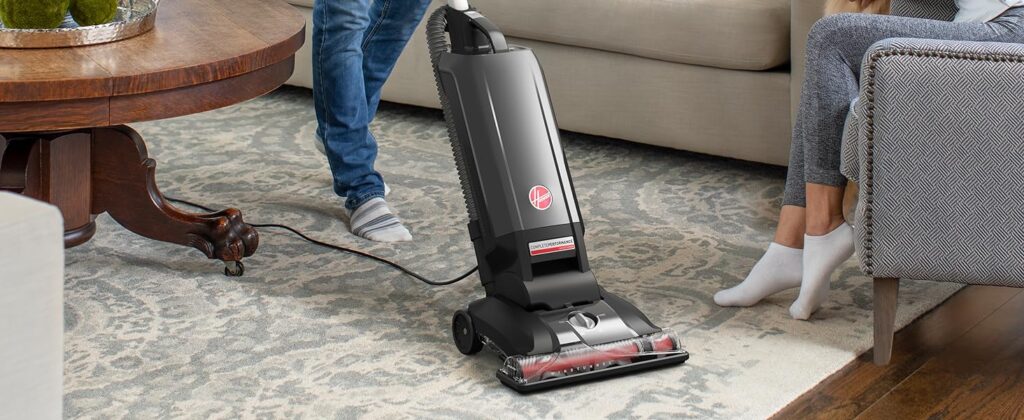
What This Guide Covers
I’ll walk you through every consideration when selecting an upright vacuum specifically for deep carpet cleaning. You’ll understand which features truly matter and which are just marketing fluff.
We’ll explore carpet types and their unique cleaning requirements. Different pile heights and fibre types demand different vacuum capabilities. Matching your vacuum to your carpet ensures optimal results.
I’ll explain technical specifications in plain language. Air watts, brush roll types, and filtration systems become clear and actionable. You’ll confidently evaluate vacuum specifications after reading this guide.
Budget considerations get honest treatment. Premium features cost more but often deliver proportional value. I’ll help you identify where to invest and where you can economise.
Let’s dive into everything you need to know about choosing the best upright vacuum for deep carpet cleaning.
1. Why Upright Vacuums Dominate Carpet Cleaning
Direct-Drive Brush Roll Advantages
Upright vacuums typically feature direct-drive brush rolls powered by dedicated motors. This configuration delivers consistent, powerful agitation regardless of suction variations.
The brush roll spins at high speeds, typically 3,000-6,000 RPM. These rotations physically agitate carpet fibres, loosening embedded dirt. Suction alone can’t replicate this mechanical cleaning action.
Direct motor connection ensures reliable brush roll operation. Belt-driven systems in some canisters lose efficiency over time.
Read Our In-Depth Review of Specific Upright Vacuum Models For a Detailed Comparison of Top Performers
Weight Distribution for Agitation
Upright vacuum weight presses brush rolls firmly into carpets. This downward force enhances fibre penetration and cleaning effectiveness.
Typical uprights weigh 12-20 pounds. This substantial weight keeps brush rolls engaged with carpet even on thick, plush pile. Lighter stick vacuums lack this penetration capability.
However, too much weight creates manoeuvrability problems. Quality uprights balance adequate weight for agitation with comfortable pushing effort.
Powerful Motor Positioning
Upright vacuums position motors directly above brush rolls. This proximity creates efficient airflow from the carpet through the entire dirt pathway.
The vertical design naturally channels debris upward into dust cups or bags. Gravity assists rather than opposes debris movement. This efficiency allows for more thorough cleaning with less suction power.
Integrated designs also reduce potential clog points. Fewer hose connections mean fewer places for debris to accumulate. This simplicity benefits long-term reliability.
Testing by Consumer Reports consistently shows upright vacuums outperforming other types on thick carpets.
2. Understanding Carpet Types and Needs
Low-Pile vs High-Pile Carpets
Carpet pile height dramatically affects vacuum requirements. Low-pile carpets (under 0.5 inches) need less aggressive brush action. High-pile carpets (over 0.5 inches) demand powerful agitation and suction.
Low-pile commercial carpets clean easily with most uprights. The short fibres don’t trap debris deeply. Basic brush rolls and moderate suction suffice.
High-pile residential carpets require premium upright capabilities. Debris settles deep within a thick pile. Only aggressive brush rolls and strong suction extract embedded dirt effectively.
Shag and Frieze Carpets
Shag carpets with their long, loose fibres present unique challenges. Standard brush rolls can tangle in long pile. Some uprights include brush-off settings for delicate carpets.
Frieze carpets feature a tightly twisted, dense pile. They hide dirt exceptionally well but release it reluctantly. These carpets need maximum brush agitation and suction power.
If you have shag or frieze carpets, verify your chosen vacuum includes appropriate settings. Not all uprights handle these types of carpet effectively.
Berber and Loop Carpets
Berber-style loop carpets require careful vacuum selection. Aggressive brush rolls can catch and pull loops. This damages the carpet structure permanently.
Look for uprights with adjustable brush roll height or brush-off capability. These features protect loop carpets while still providing adequate cleaning.
Some manufacturers specifically design brush rolls for loop carpet safety. These gentler designs clean effectively without loop damage risk.
Area Rugs vs Wall-to-Wall
Area rugs demand different considerations than wall-to-wall carpeting. Lightweight rugs bunch under aggressive upright brush action. Fringed edges tangle easily.
Wall-to-wall installation stays secure during cleaning. You can use full vacuum power without carpet movement concerns.
If you primarily clean area rugs, consider uprights with gentle settings or suction-only modes. This versatility prevents rug damage while maintaining cleaning capability.
The Carpet and Rug Institute provides detailed guidance on proper carpet care and vacuum selection for different carpet types.

3. Critical Features for Deep Carpet Cleaning
Motorised Brush Roll Types
Brush roll design determines carpet cleaning effectiveness more than any other single feature. Different configurations serve different purposes.
Traditional bristle rolls use stiff nylon brushes. These agitate effectively but require regular cleaning. Hair and fibres wrap around bristles over time.
Rubber blade rolls resist tangling and clean themselves. However, they provide less aggressive agitation. These work well for pet hair but struggle with embedded dirt.
Combination rolls feature both bristles and rubber elements. This hybrid design offers tangle resistance with strong agitation. Premium uprights often include these advanced brush rolls.
Brush Roll Height Adjustment
Height adjustment allows matching brush roll penetration to carpet pile. Proper height ensures optimal cleaning without carpet damage.
Too low creates excessive resistance and potential carpet wear. Too high reduces brush contact and cleaning effectiveness. Multiple height settings accommodate different carpet types.
Automatic height adjustment simplifies operation. The vacuum senses carpet pile and adjusts appropriately. This convenience ensures consistent optimal performance.
Suction Power Ratings
Suction power, measured in air watts, indicates debris removal capability. For deep carpet cleaning, look for a minimum of 100 air watts. Premium models offer 150-200+ air watts.
Higher suction doesn’t automatically mean better cleaning. The entire airflow system matters. Well-designed pathways maximise effective suction at the carpet surface.
Sealed systems maintain suction by preventing air leaks. Quality uprights seal all connections between the brush roll and the dust container. This engineering maximises cleaning effectiveness.
HEPA Filtration for Embedded Allergens
HEPA filters capture 99.97% of particles down to 0.3 microns. This filtration matters enormously for allergy sufferers and indoor air quality.
Deep carpet cleaning releases trapped allergens into the air. Without proper filtration, vacuuming just redistributes these particles. HEPA filtration captures them permanently.
Complete sealed systems prevent unfiltered air escape. Check that your chosen upright features both HEPA filters and sealed construction.
Dirt Pathway Design
The route debris travels from carpet to container affects cleaning efficiency. Straight, wide pathways prevent clogs and maintain suction.
Sharp bends and narrow passages create restriction and clogging points. Quality uprights minimise these problem areas through thoughtful engineering.
Transparent dirt pathways allow visual monitoring. You can spot clogs before they reduce cleaning effectiveness. This visibility aids maintenance and troubleshooting.
4. Brush Roll Technology Explained
Standard Rotating Brushes
Traditional rotating brush rolls have served effectively for decades. Stiff nylon bristles agitate carpets thoroughly when properly maintained.
These brushes require regular cleaning to maintain effectiveness. Hair, thread, and fibres wrap around brush rolls and bearings. Monthly cleaning prevents performance degradation.
Despite maintenance requirements, standard brushes deliver excellent deep cleaning results. Their aggressive agitation loosens embedded dirt effectively.

Self-Cleaning Brush Rolls
Self-cleaning brush technology prevents hair wrap through innovative design. These systems eliminate the frustrating maintenance task of cutting tangled hair.
Cone-shaped bristle arrangements or comb designs guide hair into the suction stream. Hair travels to the dust container rather than wrapping around the roll.
This technology particularly benefits pet owners and households with long-haired residents. The time saved on maintenance adds up significantly.
Anti-Tangle Technology
Various manufacturers approach tangle prevention differently. Some use V-shaped bristle patterns. Others incorporate spiral designs that funnel debris away from bearings.
Effectiveness varies between implementations. Research specific models’ anti-tangle performance through user reviews. Marketing claims don’t always match real-world results.
Even with anti-tangle features, occasional brush roll inspection remains wise. No system completely eliminates all tangling in every situation.
Brush On/Off for Hard Floors
Brush roll shut-off allows safe hard floor cleaning. Running spinning brushes on hardwood can scatter debris and potentially cause scratches.
Quality uprights include convenient brush control—typically a foot pedal. This allows switching between carpet and hard floor modes without bending.
If your home includes both carpets and hard floors, verify your chosen upright includes this essential feature. Not all models provide brush shut-off capability.
Research from Good Housekeeping’s Cleaning Lab emphasises that brush roll quality significantly impacts carpet cleaning performance.
5. Bagless vs Bagged for Carpet Cleaning
Dust Containment Comparison
Bagged systems contain dust more completely than bagless designs. When removing full bags, debris stays sealed. This matters significantly for allergy sufferers.
Bagless systems expose you to dust during emptying. Even careful emptying releases some particles. This trade-off provides cost savings but raises health considerations.
For severe allergies, bagged uprights offer superior protection. The complete dust containment justifies ongoing bag costs.
Maintenance Requirements
Bagless uprights require more frequent filter cleaning. Dust accumulation on filters reduces suction. Most manufacturers recommend monthly filter maintenance.
Bagged systems need simpler maintenance. Replace bags when full and change filters according to schedule. The bags themselves act as primary filters.
Consider your willingness to perform regular maintenance. Bagless requires more attention, but eliminates bag purchases.
Cost Over Time
Bagless uprights cost less long-term by eliminating bag purchases. However, replacement filters still represent ongoing expenses.
Quality vacuum bags cost $2-5 each. Heavy carpet cleaning might require monthly replacement. Calculate 12-15 bags annually for frequent use.
Bagless systems require filter replacements every 6-12 months. These typically cost $15-30. The math slightly favours bagless for most users.
Allergen Considerations
Bagged uprights provide superior allergen containment throughout the cleaning process. This includes both vacuuming and emptying operations.
Bagless designs expose you to allergens during filter maintenance and dust cup emptying. This exposure concern outweighs cost savings for sensitive individuals.
Some bagless models feature improved dust cup sealing and filter designs. These reduce but don’t eliminate allergen exposure.
The Asthma and Allergy Foundation of America recommends bagged vacuums with HEPA filtration for households with allergy concerns.
You can read our in-depth review of specific upright vacuum models for a detailed analysis of top performers
6. Essential Attachments for Complete Cleaning
Crevice Tools for Baseboards
Narrow crevice tools reach tight spaces along baseboards and corners. These areas trap significant dirt that upright main heads can’t access.
Quality crevice tools measure 10-12 inches long with narrow tips. This length and shape combination reaches deep into corners effectively.
Using crevice tools along baseboards before vacuuming prevents scattering debris onto clean carpet. This sequencing improves overall cleaning results.
Upholstery Attachments
Upholstered furniture accumulates dust, allergens, and debris. Dedicated upholstery tools clean furniture effectively without damage.
These attachments feature gentler suction and soft bristles. They remove debris without pulling upholstery fabric. Regular furniture cleaning improves overall home cleanliness.
Some upholstery tools include lint-removal features. These prove valuable for pet hair or fabric furniture that attracts fibres.
Extension Wands
Extension wands add reach for ceiling fans, curtains, and high corners. These often-neglected areas contribute significantly to dust circulation.
Telescoping wands adjust to various heights. This versatility accommodates different ceiling heights and user preferences.
Lightweight construction ensures comfortable extended-reach cleaning. Heavy wands cause arm fatigue during overhead use.

Pet Hair Tools
Specialized pet hair tools feature rubber or textured surfaces. These attract and capture pet hair more effectively than standard attachments.
Motorized pet tools include small brush rolls. These agitate upholstery and stairs, releasing embedded pet hair. The combination of agitation and suction removes hair that other tools miss.
Pet owners should prioritise uprights with comprehensive pet tool sets. These attachments significantly improve cleaning effectiveness.
7. Weight and Maneuverability Matters
Push/Pull Effort on Thick Carpet
Upright vacuum weight affects carpet cleaning ease. Heavier models provide better brush roll penetration but require more pushing effort.
Thick, plush carpets resist movement more than low-pile carpets. Your vacuum must balance adequate weight for cleaning with comfortable manoeuvrability.
Test the vacuum weight on your actual carpet when possible. Store demonstrations on hard floors don’t replicate real-world carpet resistance.
Swivel Steering Benefits
Swivel steering technology allows easy directional changes. The vacuum pivots smoothly around furniture legs and obstacles.
Traditional fixed-wheel uprights require lifting for direction changes. This lifting becomes exhausting during whole-house cleaning sessions.
Premium uprights increasingly include swivel mechanisms. This feature dramatically improves cleaning efficiency and reduces physical effort.
Stair Cleaning Capability
Cleaning carpeted stairs with uprights presents challenges. The main vacuum body weight and size make stair navigation difficult.
Detachable canisters or lift-away designs improve stair cleaning. You carry the lighter motor unit while the base remains below.
Alternatively, long hoses with powered hand tools clean stairs effectively. Verify the included hose length accommodates your staircase.
Storage Considerations
Upright vacuums occupy significant storage space. Measure available closet dimensions before purchasing large models.
Cord wraps and onboard tool storage reduce overall footprint. These features keep accessories organised while minimising space requirements.
Some uprights convert to more compact storage configurations. If space is limited, seek models with these space-saving features.
You can read our in-depth review of specific upright vacuum models for a detailed analysis of top performers
8. Corded Power vs Cordless Convenience
Why Corded Still Dominates Uprights
Corded uprights deliver consistent maximum power indefinitely. You never experience performance degradation from dying batteries.
Deep carpet cleaning demands sustained high suction and brush roll speed. Cordless models can’t match corded performance for extended whole-house cleaning.
Battery weight also affects cordless upright design. Accommodating adequate battery capacity adds substantial weight without improving cleaning.
Cord Length Importance
Longer cords reduce the frequency of outlet changes. Look for a minimum 25-foot cords for reasonable room coverage.
Premium models offer 30-40 foot cords. This extended reach often allows cleaning multiple rooms per outlet.
Calculate your needs based on room sizes and outlet locations. Insufficient cord length frustrates cleaning sessions constantly.
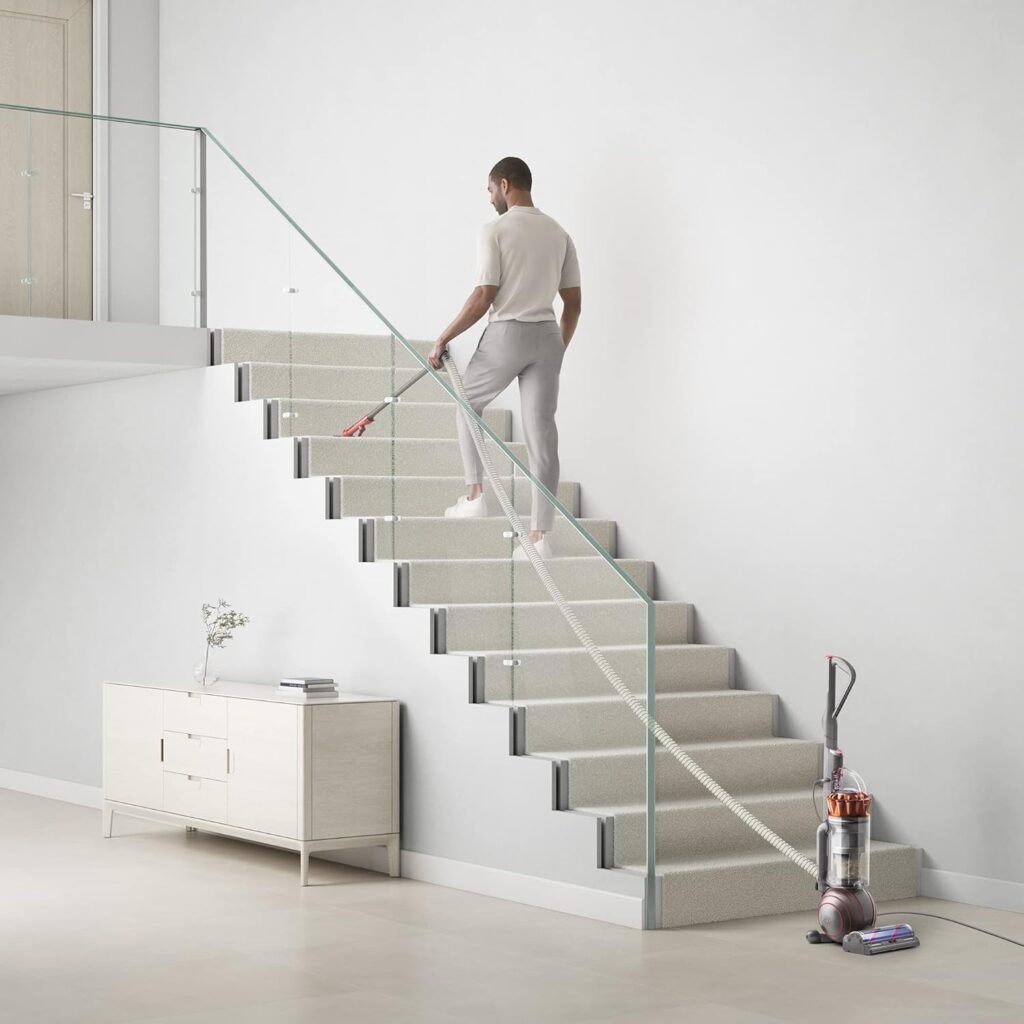
Auto-Rewind Features
Automatic cord rewind eliminates manual winding frustration. A simple button press retracts the entire cord into the vacuum body.
This convenience feature adds cost but significant value. You’ll use it after every cleaning session for years.
Quality auto-rewind mechanisms retract smoothly without tangling. Test this feature before purchasing, if possible.
Cordless Upright Limitations
Cordless uprights offer undeniable convenience for quick cleanups. However, they sacrifice performance and runtime for that convenience.
Battery life typically provides 30-60 minutes maximum. This suffices for small areas but not whole-house deep cleaning.
Suction power and brush roll speed often decrease as batteries drain. This gradual performance loss reduces cleaning effectiveness.
For serious deep carpet cleaning, corded uprights remain the superior choice. Accept the minor inconvenience for significantly better results.
Testing by Which? Consumer testing consistently shows corded uprights outperforming cordless models on thick carpets.
9. Maintenance and Long-Term Ownership
Filter Replacement Schedules
Regular filter replacement maintains suction power and air quality. Most uprights require filter changes every 6-12 months.
HEPA filters typically cost $15-30 per replacement. Some washable HEPA filters reduce this ongoing expense significantly.
Mark filter replacement dates on your calendar. Neglected filters reduce performance noticeably and release captured allergens.
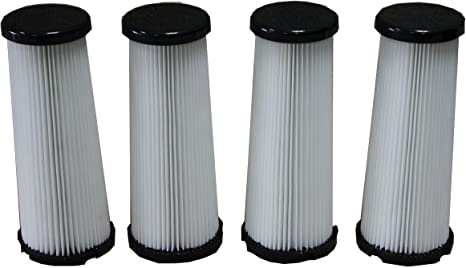
Brush Roll Cleaning
Monthly brush roll inspection and cleaning prevent performance loss. Remove tangled hair, thread, and fibres that accumulate around bristles.
Most uprights allow easy brush roll removal. This tool-free access simplifies maintenance significantly.
Clean brush roll bearings while inspecting. Debris accumulation here causes unusual noises and eventual bearing failure.
Belt Replacement
Belt-driven brush rolls require periodic belt replacement. Stretched or broken belts reduce or eliminate brush roll rotation.
Quality belts last 6-12 months with normal use. Keep spare belts available for quick replacement when needed.
Belt replacement typically requires minimal tools. Manufacturer instructions make this straightforward maintenance task manageable.
Common Repairs
Upright vacuums experience predictable wear patterns. Hose connections, height adjustment mechanisms, and swivel joints fail most commonly.
Research parts availability before purchasing. Some manufacturers provide excellent long-term support. Others discontinue parts quickly.
Consider extended warranties for premium uprights. These often prove worthwhile given typical repair costs.
The Repair Association advocates for consumer-friendly repair policies and provides resources for maintaining appliances long-term.
You can read our in-depth review of specific upright vacuum models for detailed analysis of top performers
10. Budget Sweet Spots for Carpet Cleaning
Best Value Under $200
Entry-level uprights in this range clean adequately for basic needs. They typically feature simple brush rolls and moderate suction power.
Expect compromises in build quality and features. Shorter cords, basic attachments, and plastic construction dominate this price point.
These models suit light carpet cleaning in smaller homes. Don’t expect premium performance or exceptional longevity.
Mid-Range Excellence $200-$400
This price range delivers the best value for most buyers. You gain significantly improved performance, features, and build quality.
Expect HEPA filtration, quality brush rolls, and solid construction. These uprights handle whole-house carpet cleaning effectively.
Brand reputation matters in this segment. Established manufacturers provide better long-term support than budget brands.
Premium Performance $400+
Premium uprights justify their cost through superior engineering and performance. Advanced brush roll technology, sealed systems, and exceptional suction define this category.
These models include comprehensive attachment sets and convenience features. Auto-rewind, swivel steering, and lift-away designs become standard.
Build quality ensures 7-10 year lifespans with proper maintenance. The higher initial cost spreads across many years of reliable service.
11. Our Top Upright Vacuum Recommendations
After extensive research and testing, several uprights consistently excel at deep carpet cleaning. These recommendations span different budgets while maintaining quality standards.
Premium Pick for Serious Deep Cleaning
Top-tier models from leading manufacturers deliver unmatched carpet cleaning performance. They feature the most advanced brush roll technology and maximum suction power.
These uprights include comprehensive HEPA filtration and completely sealed systems. They extract more embedded dirt than any other vacuum type.
Expect to invest $400-600 for these premium performers. The superior results justify this cost for carpeted homes.
Best Value Mid-Range Champion
Mid-range uprights offer remarkable performance at accessible prices. They include essential deep cleaning features without premium costs.
Look for models with strong suction (120+ air watts), quality brush rolls, and HEPA filtration. These core capabilities ensure effective carpet cleaning.
This category typically costs $250-350. The value proposition here suits most carpet-cleaning needs perfectly.
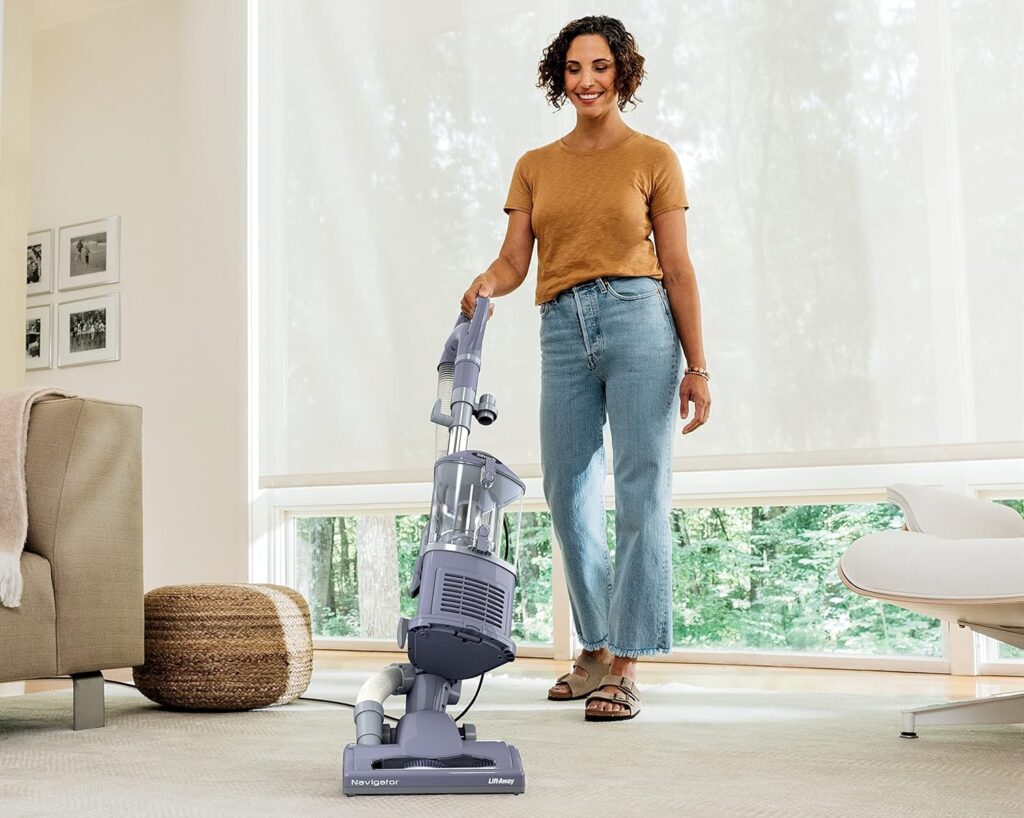
Budget-Friendly Solid Performer
Entry-level uprights can clean carpets adequately if you choose carefully. Focus on models from reputable manufacturers with good reviews.
Accept limitations in features and build quality. These vacuums won’t match premium performance but suffice for basic carpet maintenance.
Expect to spend $150-200 for legitimate budget options. Avoid cheaper models that sacrifice essential cleaning capabilities.
Specific Recommendations by Carpet Type
For low-pile commercial carpets, mid-range uprights provide excellent results. The shorter pile doesn’t demand maximum power.
High-pile residential carpets benefit from premium uprights. The advanced brush rolls and powerful suction handle thick pile effectively.
Pet owners should prioritise models with self-cleaning brush rolls and comprehensive pet tool sets. These features dramatically reduce maintenance frustration.
You can read our in-depth review of specific upright vacuum models for detailed analysis of top performers
Conclusion On How To Choose An Upright Vacuum For Deep Carpet Cleaning
Key Features Recap
Selecting the right upright vacuum for deep carpet cleaning centres on several critical features. Let me summarise the most important considerations.
Brush roll technology determines carpet agitation effectiveness. Quality motorised brush rolls with adequate speed deliver superior deep cleaning. Self-cleaning designs reduce maintenance frustration significantly.
Suction power, measured in air watts, affects debris extraction. A minimum of 100 air watts is necessary for thick carpet cleaning. Premium models offering 150+ air watts provide noticeably better results.
Height adjustment matches vacuum performance to your specific carpet type. Proper brush roll positioning ensures optimal cleaning without carpet damage. Automatic adjustment simplifies this optimisation.
Remember Your Carpet Type
Different carpets demand different vacuum capabilities. High-pile plush carpets require maximum power and aggressive brush action. Low-pile commercial carpets clean easily with mid-range uprights.
Loop carpets need gentler brush rolls or adjustable settings. Standard aggressive brushes can damage these carpet types permanently.
Match your vacuum selection to your predominant carpet type. This ensures optimal results without overspending on unnecessary capabilities.
Hands-On Testing Importance
If possible, test vacuum candidates on your actual carpet. Store demonstrations don’t replicate real-world performance on your specific flooring.
Many retailers allow returns within 30-90 days. Take advantage of these policies to verify performance at home.
Pay attention to push effort, manoeuvrability, and actual cleaning results. Specifications don’t always predict real-world satisfaction.
Maintenance Commitment
Regular maintenance preserves vacuum performance and extends lifespan. Budget time monthly for filter cleaning and brush roll inspection.
Keep replacement filters, belts, and bags available. This preparation prevents cleaning interruptions from needed maintenance.
Quality uprights reward proper care with years of reliable service. Neglect reduces performance and shortens lifespan significantly.
Budget Realistic Expectations
Your budget determines available options, but shouldn’t force inadequate compromises. Mid-range uprights ($250-350) offer the best value for most carpet cleaning needs.
Premium models justify their cost through superior performance and longevity. If the budget allows, these deliver noticeably better results.
Avoid bottom-tier vacuums that sacrifice essential capabilities. Spending slightly more initially saves money long-term through better performance and durability.
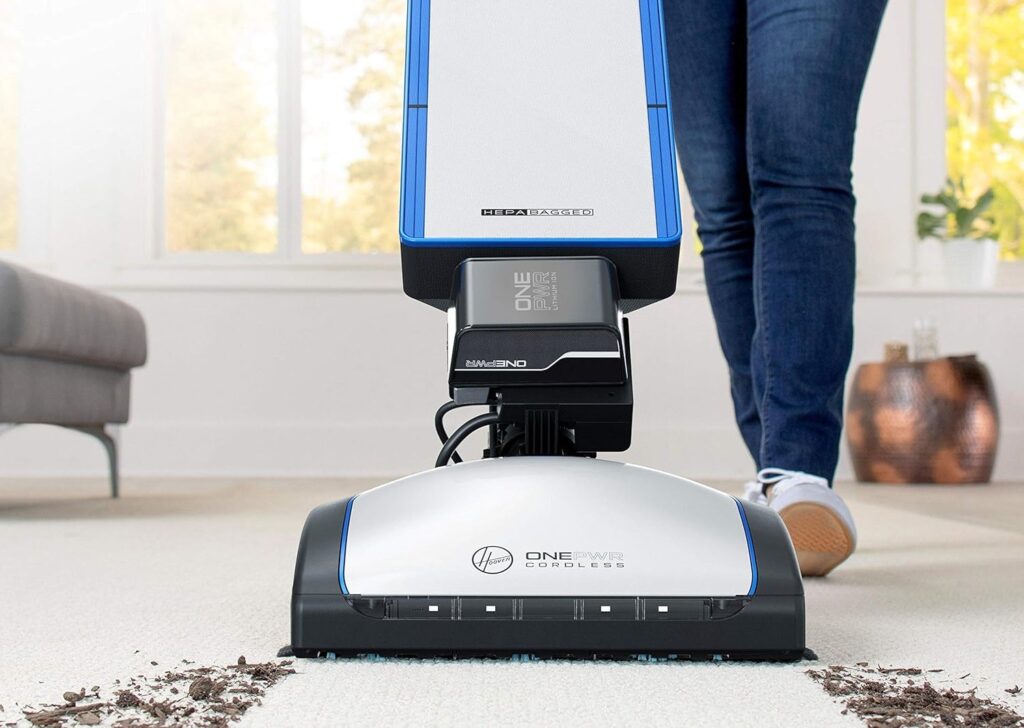
Take Action
You now understand everything necessary about how to choose an upright vacuum for deep carpet cleaning. Your specific carpet type, home size, and budget will guide your final selection.
Start by identifying your primary carpet type and calculating square footage. These factors determine the minimum vacuum capabilities required.
Review our detailed best upright vacuum list featuring comprehensive comparisons of top-performing models for carpet cleaning.
Deep carpet cleaning transforms your home’s air quality and carpet longevity. The right upright vacuum makes this essential maintenance effortless and effective. Choose wisely, maintain properly, and enjoy genuinely clean carpets for years.

